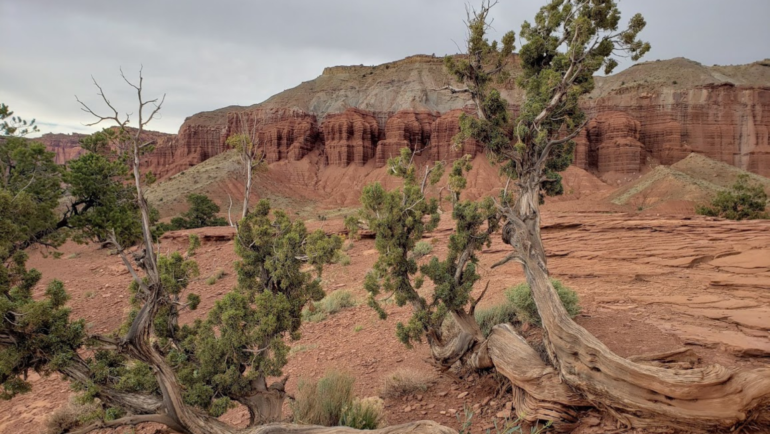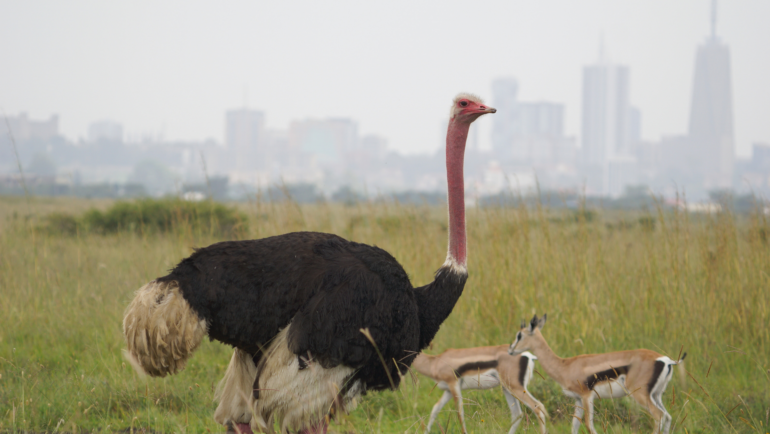It seems we’re always looking up to giraffes – literally! But the long and short of our infatuation with giraffes lies in their unique characteristics. You would be hard pressed to find another animal as truly unique as the giraffe. Yes, we all have our favorite facts about giraffes. But let’s go beyond the expected. We already know they’re really tall. Instead, let’s dive further into the fascinating lives of giraffes with 20 facts you didn’t already know.


20 Facts You Didn’t Know About Giraffes
1.) Standing Tall and Blending In
You probably already know that no two giraffes sport the same spots – just like our fingerprints. But that stunning pattern is first and foremost used for camouflage. Typically, giraffes will spend their days surrounded by brush and trees. Their patterns serve as perfect camouflage, blending with the shadows and leaves. Amazing to think how quickly giraffes can disappear, I know from experience just how challenging they can be to observe in their leafy habitats.
2.) Spotted Air Conditioning
Giraffe spots are more than just good looks while blending in. Scientists have recently discovered that underneath each spot patch lies a very sophisticated system of blood vessels. Around each patch is a large blood vessel that then branches off into smaller vessels underneath the patch. This network of veins and vessels allow giraffes to maintain their body temperature and keep cool in the hot African sun.


3.) Pokey Bites
Giraffes have a sweet tooth for acacia leaves. But these delicious leaves come at a cost. Acacia trees have long sharp thorns that keep most wildlife from eating them. Giraffes use their long tongue and prehensile lips to reach around the thorns. It also helps that they have thick, sticky saliva that coats any thorns they might swallow.
4.) Tongue For Days
Most have concluded that giraffes have a dark bluish-purple tongue to help prevent sunburn. Measuring between 18-22 inches long their tongues would be quite the painful place to get burnt. Relying mostly on their prehensile tongue, giraffes have no front teeth in their upper jaw. Instead, their 32 teeth are used for grinding and chewing up food.
5.) Tastes Better a Second Time
Bearing almost no resemblance to cows, giraffes are in fact ruminants, with a four-chambered stomach to help digest the leaves they eat. In other words, after a giraffe swallows their leaves the first time, later they will send a ball of partially digested leaves all the way back up the throat into the mouth for more grinding and chewing. When giraffes aren’t busy eating, they are chewing their cud. Think of it like a rise and repeat method.


6.) Giant Everything
We know, we know, giraffes are TALL! But let’s breakdown just how tall they really are. On its own a giraffe’s neck is over six feet long, as are their long legs. Meaning that most adults can walk underneath a standing giraffe. Even right at birth giraffes are gigantic, standing taller than most people, at nearly six feet from hoof to head. Giraffe feet are no small matter either, they can be the size of dinner plates with a diameter of 12 inches each.
7.) Spotted Lookout
Giraffe are known as the watchtowers of their habitats. Oftentimes other prey species will spend time around giraffes for the extra heads up for predators. Not only do giraffes have a greater perspective, they also have massive eyeballs – each about the size of golf balls.
8.) Mini Giraffe Naps
You would think that keeping a watch for predators all day and night might leave giraffes sleepy. But surprisingly enough, giraffes only sleep about 5 to 30 minutes in a 24-hour period! These quick power naps are all they need to stay energized. Often giraffes will rest standing up, but they sometimes will lie down with their head resting on their rump. But are only brave enough to do this when another herd member stays on lookout.
9.) Hairy Top Knot x2
Your word of the day is ossicones, aka giraffe “horns!” Both male and female giraffes have them right at birth. These tiny hairy ossicones lie flat and are not attached to the skull to avoid injury at birth. Later in life they fuse to their skulls. Into adulthood male giraffes will use them to spar, throwing their necks against each other. In fact, as males mature, calcium deposits begin to form on their skulls to help protect against head-butts with other males. These calcifications can be quite pronounced, almost giving some males the odd appearance of having extra ossicones on their heads.
10.) Giraffe Swan Dives
Baby giraffes have quite the dramatic entrance into the world – a six-foot swan dive to the ground. Since female giraffes give birth standing up, the drop alone jolts newborns into taking their first breath. After about an hour most calves begin to stand and walk about. If that wasn’t impressive enough, giraffe calves are known to grow one inch each day during their first week!


11.) Tall Nannies
Sometimes mother giraffes will leave their calves alone for most of the day. But as they grow older, the mother will leave her youngster together with other calves in a “nursery.” Another mother giraffe stays behind to babysit while the other adults go out to eat. Under the supervision of this designated babysitter, the youngsters explore their surroundings throughout the day. After about four months the young giraffes can eat leaves and will often join the herd out foraging. But they will continue to nurse until they are six to nine months old.
12.) No Tall Drink of Water Needed
Shockingly a giraffe’s neck is just a little too short to reach the ground. Because they have to splay themselves into a vulnerable position, most giraffes only drink once every few days. Instead, they get most of their moisture from the leaves they eat.
13.) Feeling Light Headed
Lowering their massive head and necks could create quite the head rush after standing upright. But to protect a change in blood pressure, giraffes have elastic-walled vessels that dilate and constrict to manage flow. With the largest heart of any of land animal, they are able to pump about 15 gallons of blood around its body every 60 seconds. (that’s blood pressure twice that of an average human)
14.) All in Stride
Even with long legs giraffes can gracefully pick up and run. Record speed for a giraffe has been measured at 34 miles per hour. And unlike horses and most other four-legged animals; giraffes walk by moving both legs on the same side of their body together. Meaning that the left front and the left hind legs step and then the right front and the right hind legs step. Creating a very unique gate as they move about.


15.) Four Species Are Better Than One
Giraffes currently inhabit only 21 countries in Africa, ranging from Niger to Namibia. But most are surprised to learn that there are actually four distinct species of giraffes. Recent studies, supported by the Giraffe Conservation Foundation, have found that these species have their own unique range, habitat, and pattern. The four species include Reticulated giraffe, Masai giraffe, Northern giraffe, and Southern giraffe. For example, Masai giraffes, found in East Africa, have spots that look like tree leaves. While the reticulated giraffe, found in the arid regions of East Africa, has a dark red body with a web of narrow cream lines.
16.) Silent Extinction
The Giraffe Conservation Foundation has estimated that giraffe populations have dropped by almost 30% in the past four decades. Their decline is being referred to as the silent extinction. Giraffes are formally listed as vulnerable throughout Africa; but they lack the protection that other vulnerable species like lions and white rhinos receive. In habitats where they remain their populations continue to decrease due to habitat loss and overgrazing of livestock.


17.) A Camel-Leopard?
Centuries ago people would often refer to giraffes as a “camel-leopard.” They believed this odd species to be a combination of the spotted cats and humped camels. That’s even where giraffes got their scientific name – camelopardalis! The only true living relative of giraffes are the stunning rainforest dwelling okapi of central Africa.
18.) What Does The Giraffe Say?
Most don’t realize that giraffes do in fact make noises. These sounds include moos, dramatic roars, snorts, and grunts. But very rarely are they this vocal. Instead, studies suggest giraffes vocalize below the level of human hearing to communication with one another.
19.) True Tower
What do you call a group of giraffes, a tower of course! Giraffes are very social animals and enjoy spending time in groups of around 15 members, typically led by an adult male.
20.) Tall Celebration
To increase awareness for this silent extinction of giraffes, Giraffe Conservation Foundation initiated the first ever World Giraffe Day on June 21, 2014. This yearly worldwide celebration brings needed attention to these animals. Fun fact, the 21st of June was selected as the perfect day to celebrate giraffes because it is the longest day or night (depending on the hemisphere) of the year. What better date to celebrate the tallest animals on earth!


























